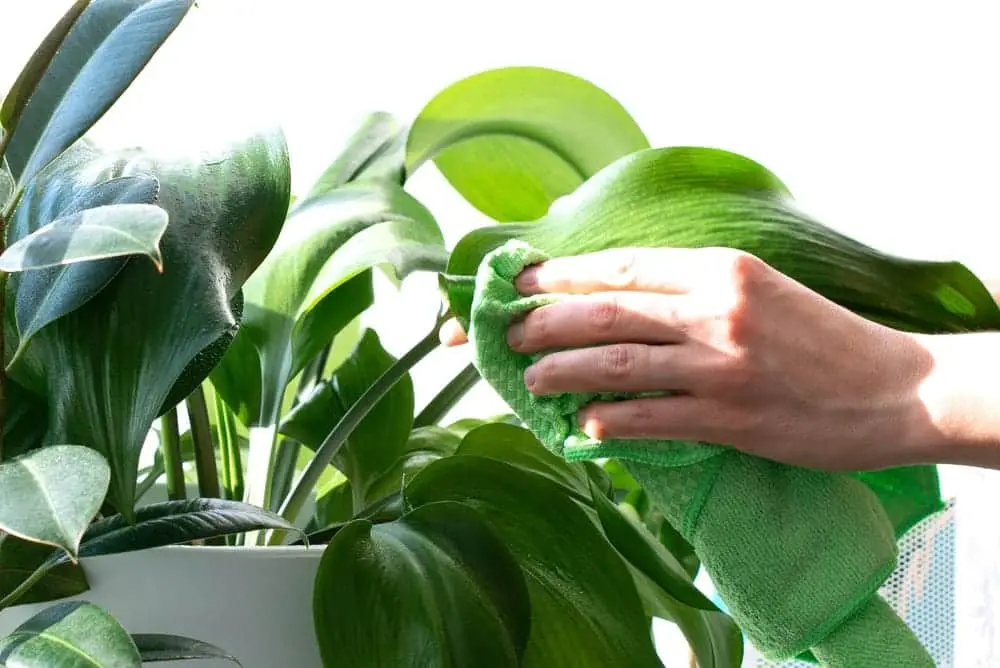It is only natural that when you bring your plants indoors for the winter that there may be some bugs on them that you do not want in the house.
Two things can help you to avoid major problems with the plants you bring inside. It is knowing when to bring them in and how to do it without bugs. In this article, we will inform you how to keep the bugs outside.
When it is Time to Bring Plants Inside
The time to bring your plants inside is several weeks before you know the cooler weather will hit in the fall. If they are left outside too long, the cold weather could cause them to drop their leaves or kill the plant. If they are left outside too long when the weather starts to cool down, the transition of bringing them inside could be a big shock to them. The general rule of thumb is to bring them inside at least two weeks before the average last frost date.
Bringing Plants Indoors
If you have a lot of plants that you need to bring indoors, you should do it in small batches. It can be very stressful to debug and move a lot of plants indoors at one time. If the plant is pot-bound, you should repot it into a larger container before bringing it inside. Doing it this way will keep all the mess outside. Making sure that your plants are cleaned and debugged before you bring them inside is a crucial step so you do not have bug problems.
The bugs that could infect the plants that you always keep indoors are the mealybugs and aphids but other houseplant insects can cause problems too. If they are brought indoors, they can cause a major infestation during the winter on your indoor plants.

Debugging Plants to Bring Them Indoors
There are a few simple steps to follow to make sure that the plants you are bringing inside are bug-free. The method being discussed should only be used on plants that are in pots with drainage holes. If not, use the method for larger plants you cannot soak.
The supplies that you will need include:
- Large bucket or tub
- Large kitchen strainer
- Mild liquid soap
- Scrub brush for your flower pots
- Old towels or rags
- Wash bucket
- Spray bottle
Step 1: Fills the large bucket or tub with water to which you add a few squirts of the mild liquid soap. You do not want to use any soap that contains degreasers or use detergent. They can damage or kill your sensitive plants.
Step 2: In order to kill any bugs on the plant, soak the entire plant, including the pot, in the water for about 15-20 minutes. The soapy water will kill any bugs in the soil or on the plant.
Step 3: Any of the leaves that are not submerged in the water you will need to clean. To clean them use organic insecticidal soap. You can also make your own using one liter of water mixed with one teaspoon of the mild liquid soap in the plastic spray bottle. Spray the leaves and wipe off with a clean cloth.
Step 4: When the plants are put in the water, all of the bugs, dead leaves, and other debris will float to the top so it needs to be removed to keep your plants nice and clean. Use the wine kitchen strainer to skim all the debris off the top of the water before taking the plant out.
Step 5: After soaking for the allotted time, take the plants out of the water and scrub the planter or pot with a scrub brush to get it clean. Once this is done, make sure that you rinse the plant and pot using a garden hose. This will get all the soap and dirt off both the planter and plant.
Step 6: Set the clean plants on a towel or something so you can leave them outside for the water to directly drain out before you take them inside.
Step 7: Always make sure that the water is clean before you start soaking another plant. Use the kitchen strainer to skim it all the dead leaves and debris from the top of the water if not already done.
Step 8: Now it is time to bring your plants indoors after they have been cleaned and debugged and all of the excess water has drained out of the bottom of the pots.
Make sure that you allow the soil to dry before you water them again. This is to make sure that you are not over-watering them.
If your planters are too large to be soaked in the soapy water or have no drain holes you can wash the stem and leaves of the plant with the soapy water you would use if you were soaking them. Once this is done, you just rinse them thoroughly with the garden hose.
Benefits of Soaking Plants in Soapy Water
The main reason that you soak your plants in soapy water is to kill the bugs but there are also other reasons. One is that when you are soaking them, the plant is getting a good watering before they are brought inside. This means that you will not have to water them for a bit once you get them inside. Another benefit is that all the debris and dead leaves will float to the top of the water and will be easy to get rid of. The planters will also look nice and clean; they will not look like they have been outside all summer.
Conclusion
If you already have indoor plants, you do not want to bring in plants and suddenly have an infestation of bugs. True, these are just little tiny bugs that do not bother humans but they can wreak havoc on your plants and it may take a while to get it under control. Be safe, use this method, and debug your plants before you bring them indoors.
Also read:
Victoria is the owner and main author of hobby plants. She loves spending her free time in her garden planting and taking care of her plants. Victoria hopes you enjoy the content here!
![Prayer Plant At Night: What Makes Them Unique? [EXPLAINED] Prayer Plant At Night: What Makes Them Unique? [EXPLAINED]](https://www.hobbyplants.com/wp-content/uploads/2022/07/prayer-plant-at-night-300x158.jpg)

![The Best Stylish Grow Lights for Indoor Plants [REVIEWED] The Best Stylish Grow Lights for Indoor Plants [REVIEWED]](https://www.hobbyplants.com/wp-content/uploads/2022/07/stylish-grow-lights-for-indoor-plants-300x158.jpg)
![How To Bottom Water Plants [MOST EFFECTIVE TECHNIQUES] How To Bottom Water Plants [MOST EFFECTIVE TECHNIQUES]](https://www.hobbyplants.com/wp-content/uploads/2022/07/how-to-bottom-water-plants-300x158.jpg)
![What Are The Types Of Dracaena Plants [Answered] What Are The Types Of Dracaena Plants [Answered]](https://www.hobbyplants.com/wp-content/uploads/2022/07/types-of-dracaena-plants-300x158.jpg)

![Can Snake Plants Live Outside? [COMPLETE CARE GUIDE] Can Snake Plants Live Outside? [COMPLETE CARE GUIDE]](https://www.hobbyplants.com/wp-content/uploads/2022/08/can-snake-plants-live-outside-300x158.jpg)

![The Types of Prayer Plants: [Varieties Explained] The Types of Prayer Plants: [Varieties Explained]](https://www.hobbyplants.com/wp-content/uploads/2022/09/types-of-prayer-plants-300x158.jpg)
![The Types of Ice Plants: [Varieties Explained] The Types of Ice Plants: [Varieties Explained]](https://www.hobbyplants.com/wp-content/uploads/2022/09/types-of-ice-plant-300x158.jpg)
![What Is Bright Indirect Light For Plants? [ANSWERED] What Is Bright Indirect Light For Plants? [ANSWERED]](https://www.hobbyplants.com/wp-content/uploads/2022/08/what-is-bright-indirect-light-300x158.jpg)
![What Are Ground Cover Plants? [Varieties Explained] What Are Ground Cover Plants? [Varieties Explained]](https://www.hobbyplants.com/wp-content/uploads/2022/08/ground-cover-plants-300x158.jpg)